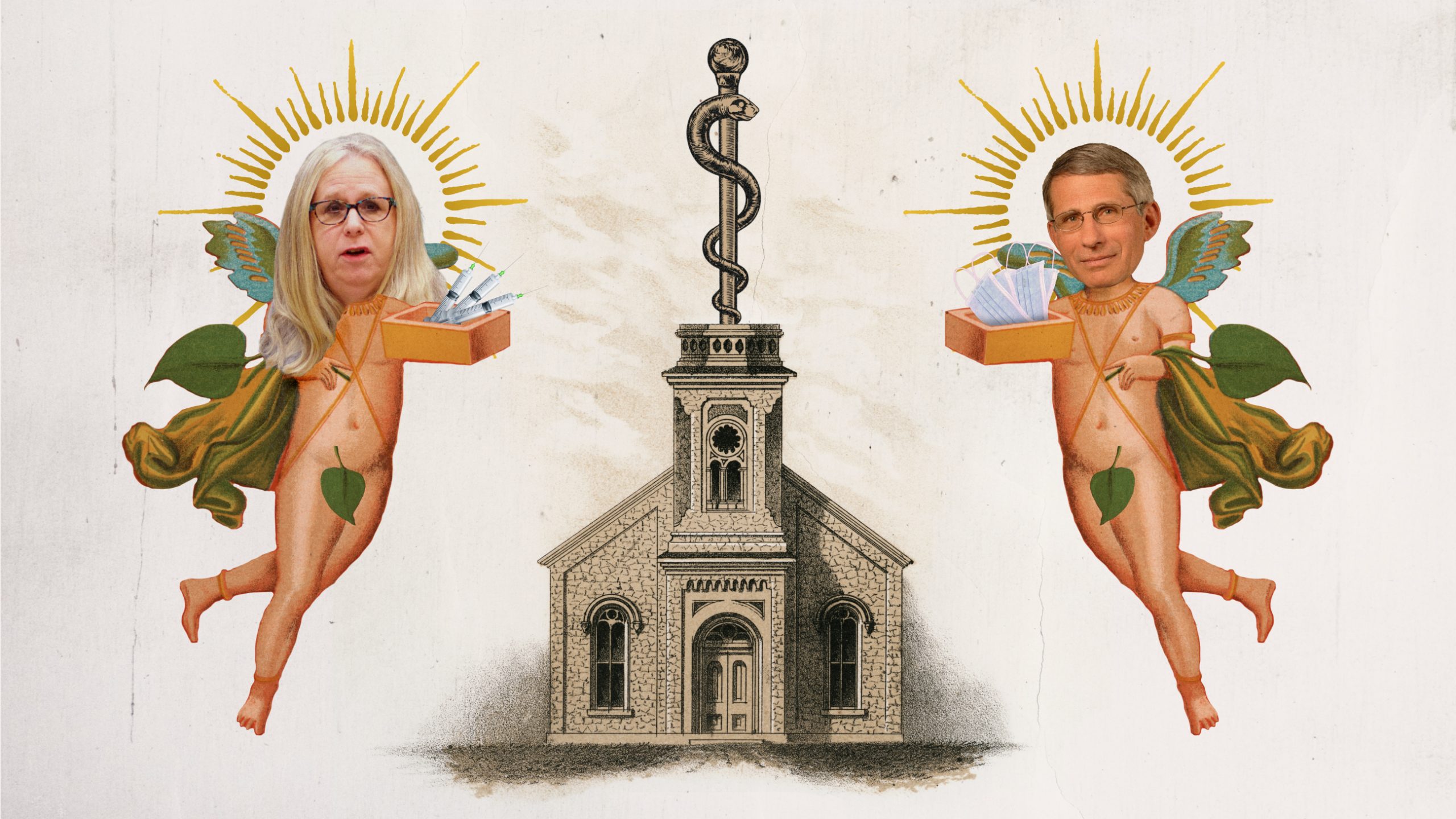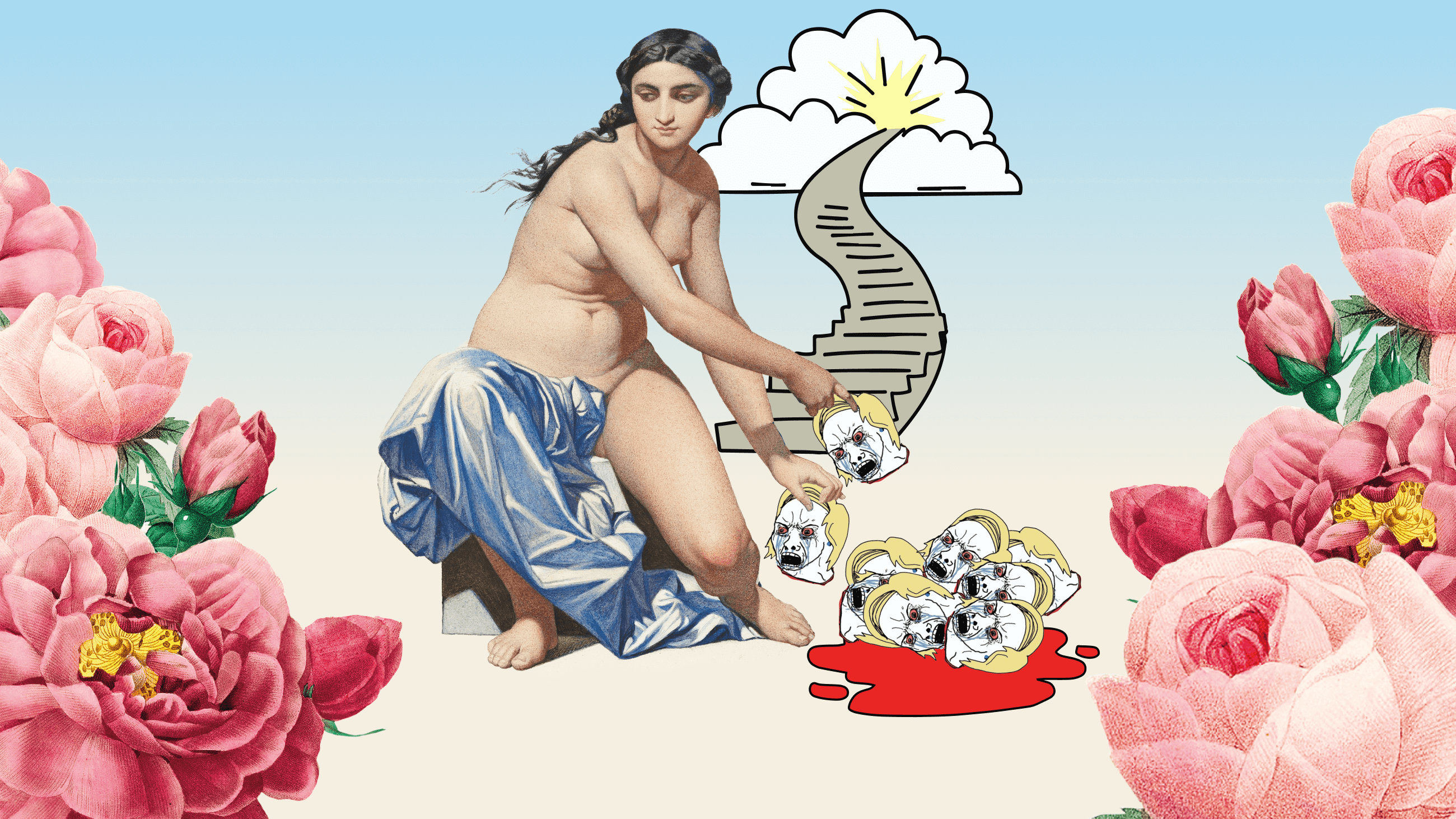The Zombie Enlightenment enslaves us to a new religion.
Feminists versus Womanhood

Liberal feminism relentlessly aggresses against the female body and soul.
In the summer of 1956, Edwina Froelich, Mary White, and Marian Tompson sat beneath an apple tree at a church picnic, nursing their babies. At the time, this behavior seemed radical: even despite its historical ubiquity, less than 30% of American mothers breast-fed in the fifties. Standard medical advice reflected a suspicion of female biology among early feminists, as well as the mass marketing campaigns of nascent industrial baby formula producers that claimed formulas were nutritionally superior to breastmilk. The standard explanation from both was that only women who could not afford formula should feed their children in the perennial mammalian way. While Edwina and her friends nursed, several women approached them, wondering why and how they managed to do it.
Sensing desperation, these three joined four other Catholic, Chicagoan suburbanite mothers to establish The Le Leche League, named for Our Lady of Le Leche, a devotion to the Blessed Virgin Mary as depicted nursing the infant Jesus. The founders wrote a pamphlet full of practical advice for new mothers, which became a book entitled The Womanly Art of Breastfeeding. The book became a bestseller. League meetings connected postpartum women to those who had long mastered the art of lactation. Experienced women conferred emotional support and technical wisdom unto new moms. Because of their efforts, a reservoir of female reproductive wisdom, which had almost been dried up by atomization, showed signs of revival. Babies were fed, mothers were nurtured, friendships were born, and the League expanded to become an international association.
The League also joined forces with the Natural Birth Movement to advocate ending the obstetric practice of “twilight birthing.” This method of facilitating labor, popularized by suffragettes Mary Sumner Boyd and Marguerite Tracy, was popular at the time: birthing mothers were put into a morphine- and scopolamine-induced semi-conscious fugue state, restrained to a bed by leather handcuffs, and left alone to thrash until the baby’s arrival was imminent.
The League and its unofficial coalition fought for women to be actively involved and aware of their own bodies during labor. They advocated for husbands to be present in the delivery room defending their wives’ preferences, so as to avoid the common cascade of interventions that incurred unnecessary trauma and compromised the initiation of breastfeeding for many women at the time—and still now. By 1980, many hospital rules had changed to favor a more holistic approach, and 54% of American women were nursing for some period of time again.
The Le Leche League saw considerable success in their struggle against the dissociative view of womanhood prevalent in American culture at the time. But the founders consistently found a foe in the dogmatic belief of liberal feminists that women’s bodies and their reproductive functions were discrete, acute nuisances and impediments to be overcome and neutralized in service of making women economically competitive with men.
This was the immediate post-baby boom era, the advent of suburban sprawl, and the de facto end of the multigenerational home in America. The dissociative tendency reverberated; people had become atomized in both their exterior and interior lives. Progressive feminists and scientists shared a perception of the human body divorced from both its immediate personal relationships and its final cause. Denizens of these two powerful cultural entities wrote and practiced as if women and their bodies were arbitrary material sums of discontinuous, infinitely malleable components—not as unique formations of irreplaceable souls, as in the classical model.
If you sift through the copious practical advice, a close reading of the original Womanly Art of Breastfeeding reveals a quite radical, almost counterrevolutionary attempt to recover modern women from the dissociative, atomizing effect of modern ideology. Early editions called for mothers to be persistently available to their young children. The 1981 edition reads: “Our plea to any mother who is thinking about taking an outside job is, ‘if at all possible, don’t’…. The needs of babies are not only for mother’s milk, or mother’s breast, but for all of her.”
Despite many successes in preaching the gospel of breastfeeding worldwide, this deeper implicit message—about the indispensable character of a woman’s real presence to her family, and about the inextricable connection between her physical and spiritual nature and her duties—was swept away by a more powerful undertow. This current was the same that infused the attempt to kill breastfeeding and neutralize childbirth in the first place, and it flows directly to the transgender movement of today. Like an ideological whack-a-mole, an unholy alliance between feminism and science remains undefeated in a forever war against the female body.
The founders passed away before they could see the Le Leche League submit to transgenderism—and thus, ironically, to the apotheosis of the very feminism and scientism that inspired their initial rebellion. In 2017, the association officially normalized use of the gender-neutral terms “chestfeeding” and “birthing person.” Le Leche has opened lactation consultancy sessions to “people of all genders,” including “non-gestational parents.” In other words, the Le Leche League now officially supports and condones men who imagine they are women in their determination to feed infants the simulacra of breastmilk that can be excreted from Frankenstein’s surgically constructed nipple—once it has been induced by a witch’s brew of experimental drugs, that is. When the medical community discovers how to transplant uteruses into autogynephilic biological males, as they are already attempting to do, the once mighty Le Leche League will likely support that alchemy, too.
Motherhood and Selfhood
For more than a century now, liberal feminists have successfully dressed “twilight birthing,” birth control, casual sex, abortion, wage slavery, the two-income trap, and now gender reassignment surgery in the emotionally satisfying language of empowerment. The movement is unstoppable precisely because their fundamental assumptions about humanity—their rejection of metaphysics, their pious devotion to an always-forthcoming, progressive technological utopia, their obsession with power over their own nature—remain unchallenged. What the Le Leche League needed to, but probably could not, communicate explicitly about womanhood and motherhood was not so superficially emotionally satisfying as the mechanical girlboss narrative.
The truth hurts: motherhood is a permanent sacrifice of one’s body to another. Beyond the acute pain of childbearing and the sometimes frustrating journey of breastfeeding, motherhood means involuntarily suffering when your child suffers, as well as voluntarily conforming your will to your child’s objective good no matter what. Motherhood in all its forms—including spiritual mothers, mothers of unborn children, adopted mothers, de facto mothers, godmothers, and bereaved mothers—indicates the female telos, which is sacrificing oneself for the sake of another for the rest of your life.
This is an unchanging, self-effacing, radically anti-individualist orientation to the world. It is pain with a purpose, punctuated by moments of inarticulable joy. I don’t know a mother who would not die for her children. There is no greater love, and, speaking politically now, there is no greater responsibility. Contrary to the oft-parroted shibboleths of modern feminism, a mother’s role is not beneath her. It is actually above her, in the sense that motherhood inherently elevates women as cultivators of the gratuitous gift we know as life itself. Perhaps they already know this. Perhaps this is the point.
The reciprocal truth of the female body and the female soul is fundamentally incompatible with the progressive, individualist, materialist, liberal feminist worldview. So the two were divided, and in this division, subjected to an antispiritual regime that aggressively robs women of their dignity and unified purpose. For women to be restored in their fullness in public and private life would mean to expose and oppose this centuries-long project of the physical, social, spiritual deconstruction of women’s bodies and minds. It would be to uphold a maternal ideal so radiantly beautiful, powerful, and yet humble, as to make her detractors run and hide in shame. No wonder the enemies of humanity would like to make that Woman disappear.
The American Mind presents a range of perspectives. Views are writers’ own and do not necessarily represent those of The Claremont Institute.
The American Mind is a publication of the Claremont Institute, a non-profit 501(c)(3) organization, dedicated to restoring the principles of the American Founding to their rightful, preeminent authority in our national life. Interested in supporting our work? Gifts to the Claremont Institute are tax-deductible.
The digital era has awoken an ancient revulsion with the flesh.
Human bodies are irrevocably either male or female. Attempts to change that are recklessly destructive.
Finding a middle ground between Kardashian bod and blobby positivity.




